
The former County of Avon, created in 1974 ceased to exist in 1997. The area is now divided into four new Unitary Authorities, namely South Gloucestershire, Bristol, North Somerset, and Bath & North East Somerset. The names reflect the county status of these areas before Avon was created. North Stoke and East Harptree are in the north and south of the new B&NES "county".
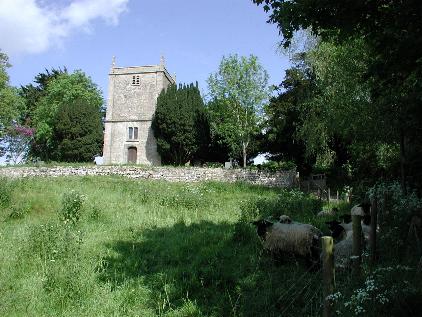 |
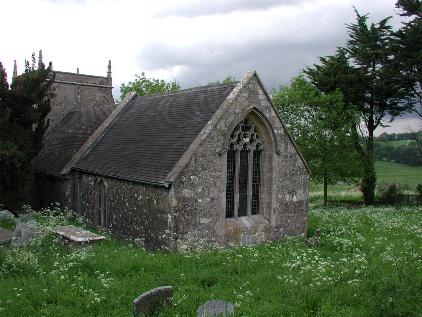 |
Overlooking the Golden Valley, between Bristol and Bath, lies the small village of North Stoke. Not many people notice the turning left between Bitton, South Gloucestershire and Kelston North-East Somerset. The road climbs as a single track steadily upwards, twisting and turning, and ultimately finishing at the village's highest placed building, the church of St Martin. For most of the year, especially after rain, the entrance to the churchyard is shared by a lively cascade of water, the source of the stream being close by. The climb continues through the churchyard, past the church which seems to cling to the hillside like a limpet to a rock. This is most easily noted if you walk further up the hill beyond the churchyard and look back. The River Avon shimmers in the valley, and the view is breathtaking.
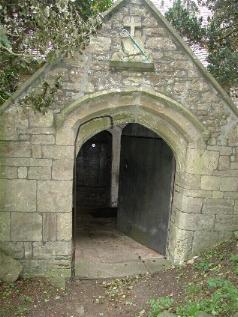 |
St Martin's church does not feature in guidebooks, but does manage some 12 lines in Pevsner's Buildings of England. It is another of England's "ordinary" churches, no great architecture but has great charm and a "sense of place." It consists of West tower, nave, porch on the south side and chancel. The tower is of early date, probably like the church itself but its present appearance owes much to repairs and alterations of 1731: see the odd obelisk-like pinnacles atop a plain parapet and the refashioned bell openings. The porch has two ancient doors, one to the outside and another into the church. | 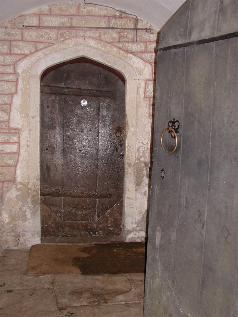 |
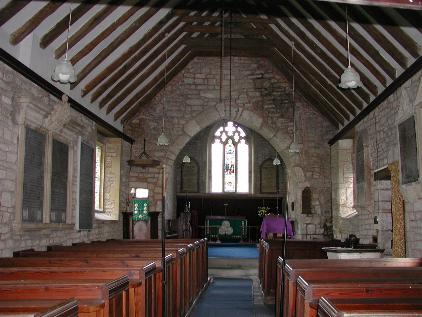 |
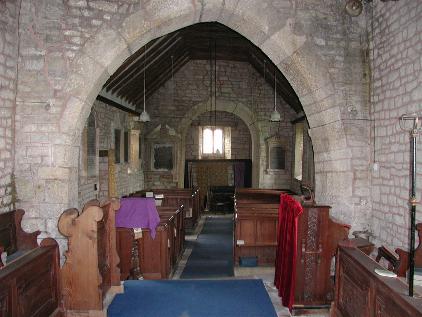 |
Inside the plaster has been removed from the walls. These are likely to be C13, but no features survive of this date. The north wall of the nave appears to have been reconstructed fairly recently. Heavy curtains cover the doorway, to afford some protection from draughts for the worshippers as the wind blows outside even on a relatively calm day. The font by the door has a square bowl and bears traces of medieval colouring. The chief feature however is the hill, the floor rises inside the church from west to the altar at the east and in plan the nave is more like a parallelogram than a rectangle, more easily seen in the picture above (right).
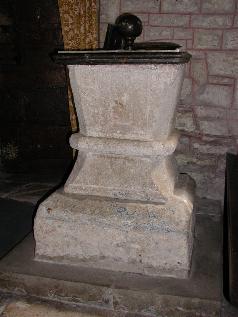 |
The chancel arch is of rough construction,
vaguely pointed and the tower arch is semi circular, a
result of the C18 rather than Norman design. There are
also simple fittings in keeping with the church,
including altar rails with twisted balusters, and a
number of C17, C18 and C19 epitaphs. The best, to the
Ward family under the tower, has lost its inscription but
still preserves a fine relief of a mourning female with
an exotic palm tree behind her and a massive urn
supporting her. It is by T.Ford of Bath. The font is
probably C13 and as a wooden cover with a large knob-like
finial. I often spend time here in the summer, sat in the field above the church, an oasis of calm (with thistles!) between two major English cities, each only some five miles away. |
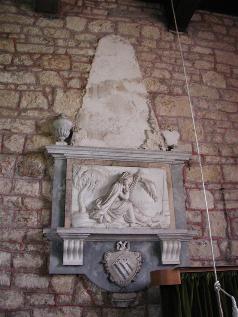 |
In the south of B&NES lie the Harptrees, West Harptree the more conspicuous on the main Bath to Weston-super-Mare road and East Harptree to the south on quiet roads to nowhere in particular. In times gone by East Harptree was a place of some importance and there was a castle some four hundred metres west of the church, long since vanished. The church stands in an elevated position in the village.
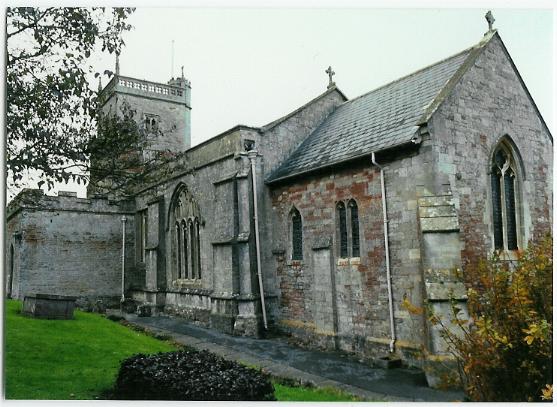
The church consists of West tower, nave with S porch and chancel, and a north aisle. The tower is not one of Somerset's finest, of two stages but with a pierced parapet having small angle pinnacles and a larger NE stair turret. The porch is notably large and shelters an unusual Norman doorway with segmental arch. Here too the most important monument in the church.
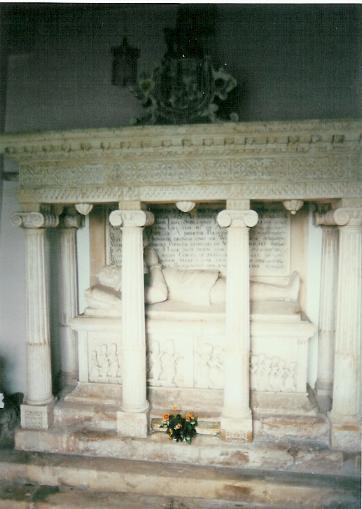
The tomb of Sir JohnNewton d1568 used to stand inside the church underneath the east window but was moved to the east wall of the porch. Six fluted Ionic columns support the canopy on which rest his family crest. Here too a small kneeling black figure, a Moor, delivering up his sword but carrying a crown to show that he is a king. The inscription is on the back wall, behind the reclining effigy of Sir John, his hands in prayer and head on a pillow. On the chest below are his children, eight sons and twelve daughters, kneeling.
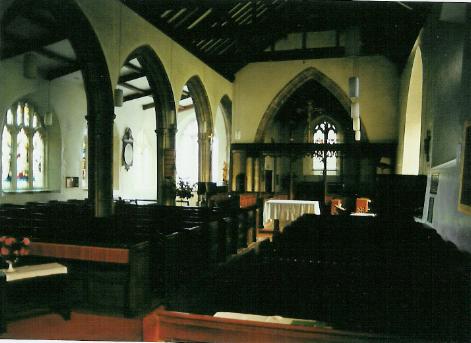
The interior at first glance looks to be fairly typical but closer examination finds some unusual features. The nave preserves much Jacobean woodwork, benches, some wall panelling and the pulpit. There is also a strange small west gallery with the organ of later date. Large Perpendicular side windows, especially the one by the pulpit of four lights. The chancel screen is attractive work of the C20. The side windows of the chancel are splayed lights and the east window is two-light in a simple Decorated design. In the south wall are two piscinae, one a double piscina, the other standing one metre further east which suggests that the chancel has been lengthened. More unusual still is the Perpendicular arcade of slim proportions which continues some 60 centimetres beyond the chancel arch: behind the north respond of the chancel arch is a squint (hagioscope) from the aisle. Perhaps it was hoped to rebuild the chancel, but whereas the tower and body of the church was the responsibility of the community to maintain, the chancel was the responsibility of the diocese or patron to maintain. Many Somerset churches (like elsewhere) have been rebuilt with lofty ornate towers, clerestoried nave and aisles on a grand scale, but have been left with low mean-looking (in comparison) chancels.